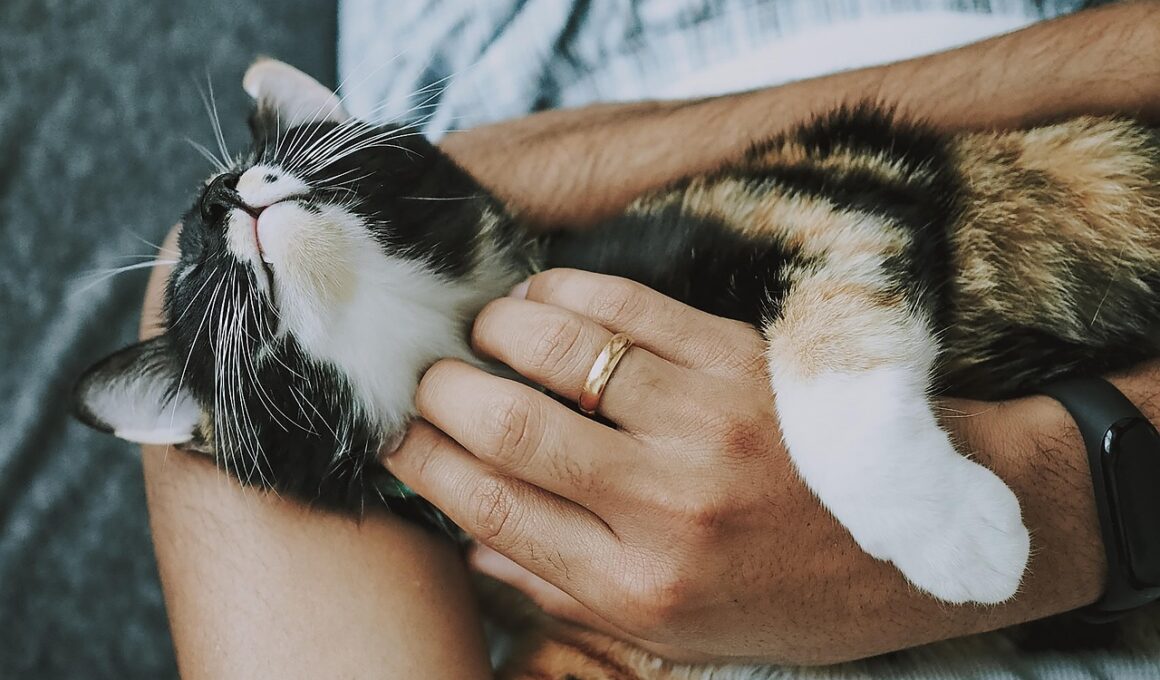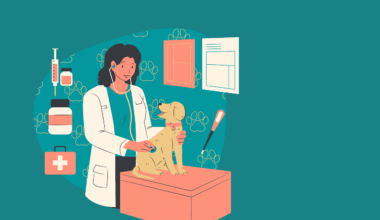Signs That Indicate Your Cat May Need CPR
Recognizing the signs that your cat may need cardiopulmonary resuscitation (CPR) is critical for every cat owner. Cats may need CPR in emergencies related to respiratory or cardiac distress. First, notice if your cat is unconscious and unresponsive, which could indicate a serious medical issue. The absence of normal breathing is another alarming symptom. To confirm, listen closely and observe your cat’s chest for any rise and fall. In addition, you should check for a heartbeat by finding the chest’s pulse. Use two fingers to locate the pulse on the inner thigh. If there is no heartbeat or breathing, begin CPR immediately. Another alarming sign could be a bluish tint in your cat’s gums or tongue, indicating a lack of oxygen. Furthermore, cats may act unusual or show signs of distress, such as panting or excessive vocalizations. You must stay calm and assess the situation before attempting CPR to avoid worsening the condition of your beloved feline. Seek veterinary help as soon as possible, even after performing CPR, because professional care is essential anytime your cat shows these critical signs.
When observing your cat’s overall behavior, any sudden change may indicate a medical emergency. If your cat is lethargic, unwilling to engage in usual activities, or hiding, it can be concerning. You should pay attention to any unusual changes in appetite, water intake, and litter box habits. Dramatic declines in activity or interest can be key warning signs. Monitor your cat’s breathing closely. Quick, shallow breathing or labored gasping can require immediate intervention. Additionally, if your cat appears to be in pain or shows unusual movements such as twitching or jerking, this warrants close attention. Feeling for a warm or cool temperature may also provide a clue into your cat’s well-being; either extreme can signify something is amiss. Away from physiological signs, be aware of behavioral symptoms, such as obsessive grooming or hiding. It’s essential to know your cat well so that you can recognize anomalies in your pet’s demeanor. Finally, always err on the side of caution; if you’re ever in doubt about your cat’s condition, don’t hesitate to consult your veterinarian for further evaluation and guidance on appropriate next steps.
Monitoring Your Cat’s Vital Signs
Regular monitoring of your cat’s vital signs can help you better understand their baseline health. Knowing how to measure vital signs like heart rate, respiratory rate, and temperature can aid in early detection of any potential problems. To assess your cat’s heart rate, gently feel the pulse on the inner thigh or listen to the heartbeat with your stethoscope, if available. A normal cat’s heart rate typically ranges from 140 to 220 beats per minute, depending on the cat’s health, age, and exercise level. Meanwhile, the normal respiratory rate should be between 20 and 30 breaths per minute when resting. Any deviation from these rates should prompt immediate evaluation. Additionally, a normal body temperature for your pet ranges from 100.5 to 102.5 Fahrenheit. Anything below or above can indicate an emergency. As these signs can change rapidly, keep a log of your observations to provide to your veterinarian if needed. Always remember that stress and illness can amplify these conditions, so keep monitoring regularly. Maintaining your cat’s health is essential for a long, happy life with your furry companion.
Another critical sign to watch for is excessive vomiting or diarrhea. If your cat experiences these symptoms frequently or shows other signs of distress, immediate action may be required. Additionally, note if your cat is exhibiting signs of bleeding, like blood in urine or vomit, or if they have any injuries. Always remember that sudden behaviors, such as hiding or aggression, can point to mental stress or discomfort needing urgent attention. Be attuned to their needs and ensure they receive ample opportunity for play, which can help alleviate stress. If your cat is panting more than usual or resting with an open mouth, they may struggle with breathing; this requires urgent evaluation. Pay close attention to the state of your cat’s coat; excessive shedding or lackluster fur can indicate underlying health issues. Regular grooming sessions can reveal changes in fur or skin that might necessitate a vet visit. Remember, proactive care can prevent emergencies from escalating and ensures that your furry friend stays healthy and happy.
Preparing for Emergencies
To ensure you are prepared for any potential CPR situation with your cat, consider assembling a pet first aid kit. This kit should include necessary tools and supplies like gauze, bandages, scissors, and antiseptic wipes. Additionally, having your veterinarian’s contact information and an emergency clinic’s details readily accessible could be lifesaving. Familiarize yourself with basic CPR techniques specifically for cats before an emergency occurs; owning a pet is a 24/7 responsibility. You can find instructional videos and guides online from reputable sources. Knowing the proper techniques can give you confidence and clarity during critical moments. Regularly review the contents of your first aid kit to ensure nothing is expired and that you have everything needed to manage basic situations. Taking these precautions allows you to respond quickly in the event of an emergency. Your agility and quick reflexes in the case of sudden health issues may help save your cat’s life. Additionally, consider enrolling in a pet first aid and CPR course to deepen your understanding of crucial care methods.
Finally, it is important to remain calm during emergencies. Cats can sense their owner’s anxiety, which can create further stress for them if they are unwell. Your demeanor can impact their response. If you are vigilant about your cat’s health indications, you increase the likelihood of timely interventions that could save their life. Ensure that all family members know how to identify signs of distress in your cat. A unified approach increases everyone’s ability to respond effectively in challenging situations. Make it a part of your routine to observe their behavior daily, shaping a connection that allows quick detection of abnormalities. If CPR or other medical interventions are required, perform them smoothly and confidently while ensuring that emergency care is on its way. Post-incident, you should keep an open dialogue with the veterinary provider about your cat’s overall well-being. Discuss any concerns and maintain regular wellness visits, fostering proactive health management. Keeping these strategies in mind may help you become your cat’s best advocate.
Conclusion – Prioritizing Your Cat’s Well-being
Understanding when your cat may need CPR is essential for any dedicated pet owner. By recognizing crucial signs such as unresponsiveness or abnormal breathing, you will be better equipped to act quickly. Monitoring your cat’s vital signs, behavior, and overall health makes it easier to identify potential emergencies before they escalate. Staying educated about CPR for cats can enhance your confidence and ability to intervene during a critical time. Prepare for emergencies with a well-stocked first aid kit, and familiarize yourself and your family members with essential techniques. Always prioritize calmness during a crisis, as your emotional state can impact your pet’s reaction to stress. Finally, maintain a regular relationship with a veterinary professional to ensure your beloved pet receives the necessary care tailored to their needs. Bonding with your cat through love and responsibility reinforces a strong relationship that leads to healthier and happier lives. The bond between you and your cat relies on diligence, vigilance, and knowledge, essential elements that contribute to their safety and enjoyment of life alongside you.
Education is an ongoing process, especially regarding your cat’s health. The more you understand their behaviors and needs, the better you can address any challenges. Research reputable sources and consider attending workshops or seminars on feline health and first aid. Stay informed about common illnesses and risk factors specific to your cat’s breed or age group. Learning about these can help you recognize subtle signs of distress that might otherwise go unnoticed. Additionally, engaging in discussions with other cat owners can provide invaluable insights, sharing experiences that broaden your understanding. Creating a community of support and knowledge can strengthen your own decision-making regarding your cat’s care. Another crucial aspect to consider is the environment in which your cat resides. Making sure their space is safe and enriched can help reduce stress and mitigate accidents. Creating a calming environment encourages natural behaviors while guarding against potential hazards. Having a well-structured, loving home enables your feline friend to thrive. Ultimately, your commitment to continuous learning and improvement in caregiving will significantly benefit your cat’s health and overall quality of life.


